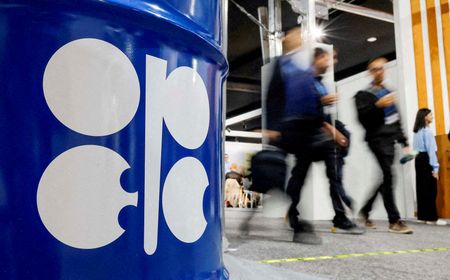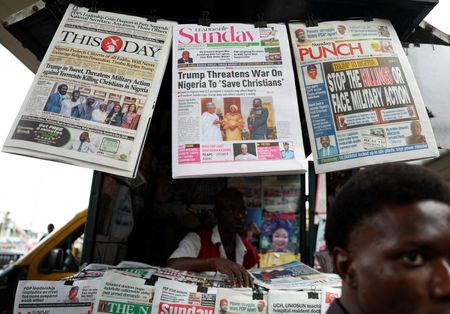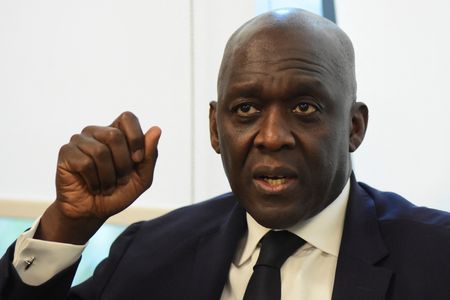By Scott DiSavino
NEW YORK (Reuters) -Oil prices held steady on Monday as the market balanced the latest OPEC+ supply increase with the group’s plans to pause output increases in the first quarter of 2026 along with fears of an oil supply glut and weak factory data in Asia.
Brent crude futures fell 24 cents, or 0.4%, to $64.53 a barrel at 10:37 a.m. EST (1537 GMT). U.S. West Texas Intermediate (WTI) crude fell 31 cents, or 0.5%, to $60.67.
OPEC+, the Organization of the Petroleum Exporting Countries (OPEC) and allied producers, agreed on Sunday to raise output by a small 137,000 barrels per day (bpd) in December.
OPEC+ also agreed to pause increases in the first quarter of next year. That does not affect the projected surplus, analysts at European financial services group SEB said in a note.
“But it shows that OPEC+ hasn’t forgotten about the price. It still cares about price. It tells us that 2026 won’t be a bloodbath or graveyard for oil,” they added.
On Monday, Morgan Stanley raised its Brent crude forecast for the first half of 2026 to $60 a barrel from $57.5, citing the decision by OPEC+ to pause quota hikes in the first quarter of next year and recent U.S. and EU sanctions on Russian oil assets.
Last month, the International Energy Agency said the global oil market faces a surplus next year of as much as 4 million bpd. OPEC expects global oil supply and demand to balance next year.
Meanwhile, European oil CEOs at a conference in Abu Dhabi cautioned against being too bearish on oil.
Analysts at RBC, a Canadian bank, said Russia remains a supply wild card after U.S. sanctions on Russian producers Rosneft and Lukoil and attacks on energy infrastructure.
A Ukrainian drone attack struck Tuapse on Sunday, one of Russia’s main Black Sea oil ports, causing a fire and damaging at least one ship.
Headwinds for Asia’s big manufacturing hubs persisted in October, business surveys showed on Monday. Asia is the world’s biggest oil-consuming region.
Chinese oil demand growth has slowed since 2020 as the country transitions to greener energy, oil major TotalEnergies CEO Patrick Pouyanne said on Monday. He said he remained optimistic long-term due to rising demand in India.
STRONG DOLLAR
A strong U.S. dollar weighed on oil prices by making crude more expensive for buyers using other currencies. The dollar hovered at a three-month high against a basket of peers.
U.S. Federal Reserve Governor Stephen Miran said he feels monetary policy remains too restrictive, heightening the risk of a downturn. The U.S. consumer’s durability as a prop for the economy may be tested in coming weeks as family budgets are stressed by rising healthcare costs, potential loss of federal food benefits, and a wobbly job market outlook.
On Sunday, President Donald Trump said the U.S. military could deploy troops to Nigeria or carry out air strikes to stop what he called the killing of large numbers of Christians in the West African country, an OPEC member and Africa’s biggest oil producer.
(Reporting by Scott DiSavino in New York and Shadia Nasralla in London, additional reporting by Florence Tan in Singapore; Editing by David Goodman and David Gregorio)











